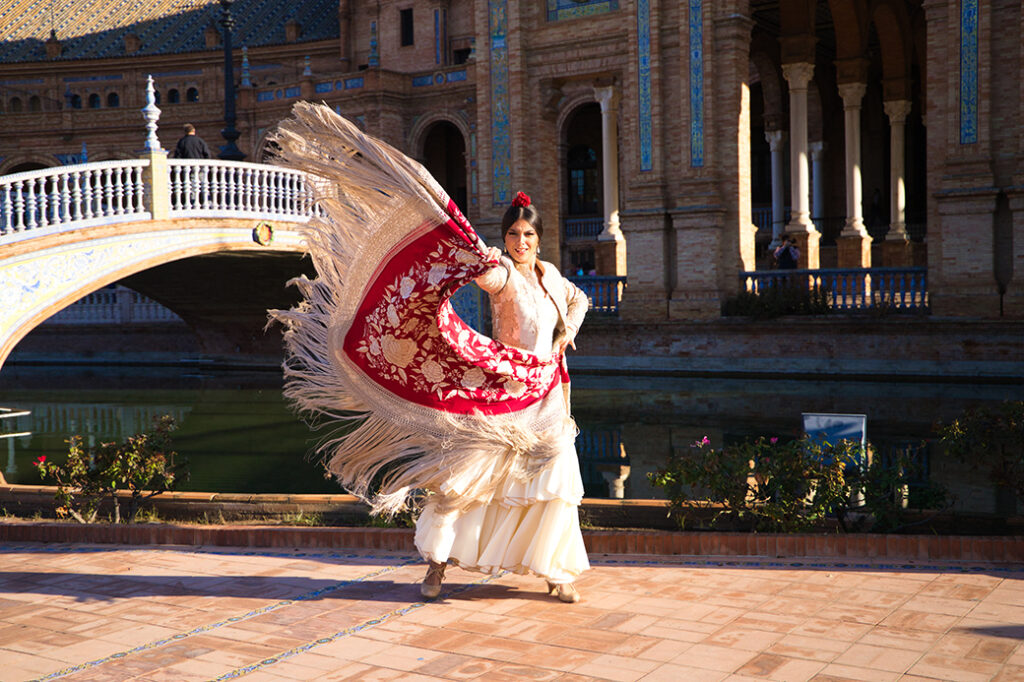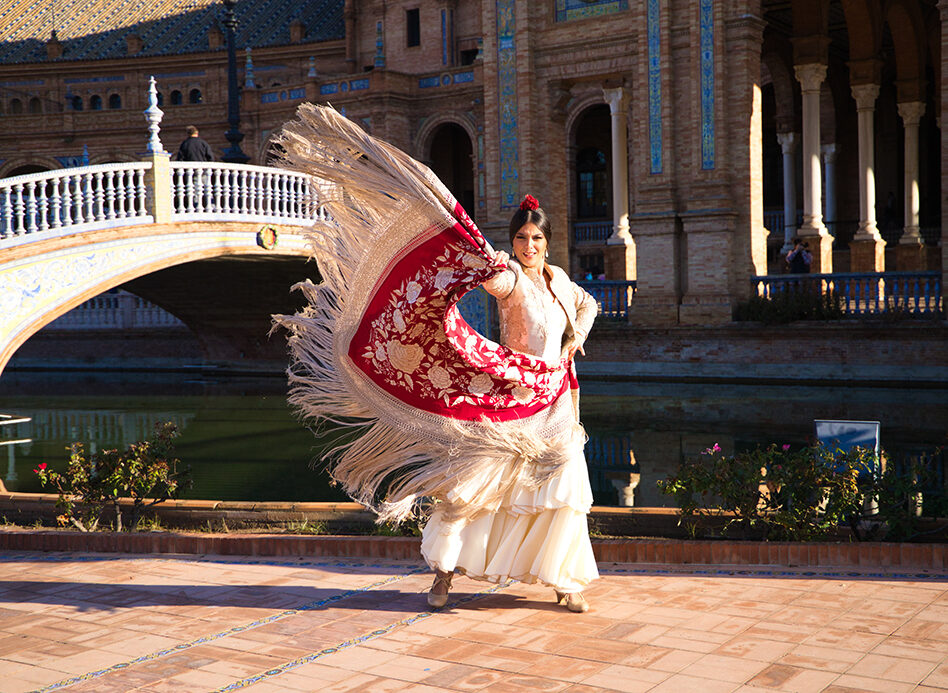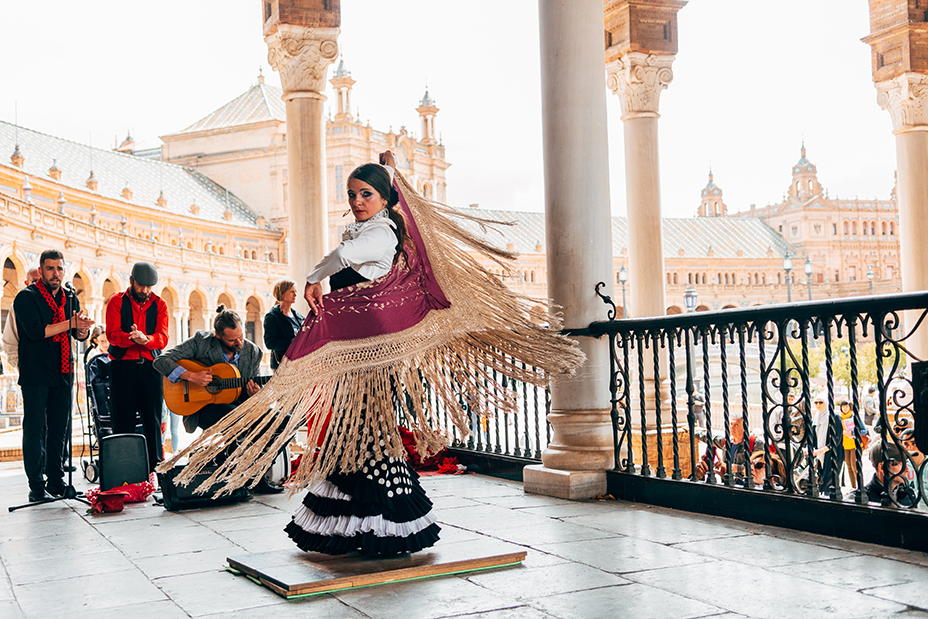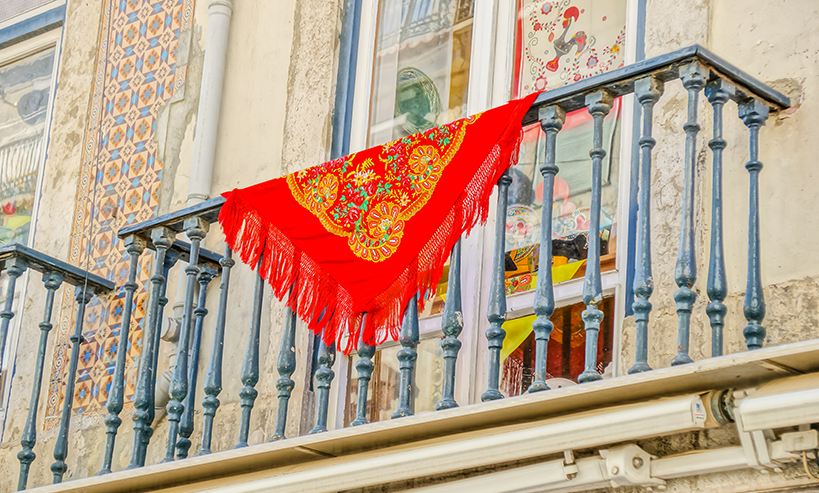

Vestuario flamenco
5 things you didn’t know about the Flamenco Shawl
The flamenco shawl is an emblematic and distinctive garment of Spanish culture, especially associated with flamenco and Spanish dance. It is characterised by a large shawl, usually made of silk or velvet, with elaborate embroidery and decorative fringes at the ends.
-
Its true origin
It is believed that the flamenco shawl was inspired by the silk shawls that were introduced into Spain through trade with the Orient, in particular with China and India. These silk shawls were known as “Manila shawls” because they were imported through the Philippines, which was a Spanish colony at the time.

-
The first colours were dark and sober
Initially, the shawls were of dark and sober colours, due to the influence of the fashion and lifestyle of gypsy women in Spain during the 18th and 19th centuries. At that time, gypsy women tended to wear dark and modest clothes, as they reflected their nomadic lifestyle and social status.
In addition, antique flamenco shawls were hand-woven and decorated with embroidery, usually in dark colours such as black, navy blue or burgundy. These colours allowed the shawls to be versatile and to be worn on different occasions without attracting too much attention.
Over time, bright and vivid colours began to be used to enhance the beauty and expressiveness of flamenco dance. In addition, lighter and more transparent materials, such as chiffon or organza, began to be used to allow for more fluid movements during the dance.

-
Its symbolism
The flamenco shawl is associated with elegance and femininity. As a garment that is wrapped around the body or worn over the shoulders, it enhances a woman’s figure and lends an air of sophistication and beauty.
Movement is also symbolic, as it is used to convey emotions and tell a story through dance. The dancer uses the shawl to emphasise and complement her movements, creating a visually striking choreography.
Despite the association with femininity and delicacy, the flamenco shawl also symbolises the strength and empowerment of women. The skilful handling of the shawl requires dexterity and control, reflecting the strength and determination of the dancer.

-
Regional identity, cultural heritage and tradition.
The flamenco shawl is part of the tradition and cultural heritage of Spain. It has been an integral part of flamenco dress and dance for centuries, passed down from generation to generation. Its presence in festivities and special events reinforces the link with Spanish history and cultural identity.
Regional identity: The flamenco shawl can also represent the regional identity of Andalusia, the region where flamenco originated. Its use has become a sign of cultural identity and is closely associated with the image of Andalusia in the world.

-
Use in special events
In addition to its role in flamenco, the flamenco shawl is also used for special occasions, such as weddings, fairs or traditional festivities in Spain. It is common to see women wearing it as part of their festive attire.

